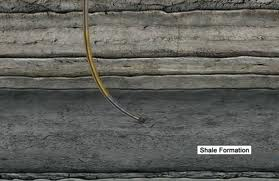Among Environmentalists, Hydrofracking Is Not A “Yes Or No” Issue
April 11, 2013
News and Views on Environmental & Toxic Tort Federal and State Legal Issues and Developments
April 11, 2013
 On April 10, 2013, I participated in “Justice Speaks,” an event sponsored by the Justice Action Center at New York Law School on hydraulic fracturing.
On April 10, 2013, I participated in “Justice Speaks,” an event sponsored by the Justice Action Center at New York Law School on hydraulic fracturing.
Joining me on the podium was Daniel Raichel, a Project Attorney with the Natural Resources Defense Council (“NRDC”), and the lead attorney with the newly formed Community Fracking Defense Project. Pursuant to this initiative, NRDC provides legal assistance to towns and local governments in potential shale drilling zones upstate that seek to prohibit hydrofracking in their communities.
My presentation concerning hydrofracking centered broadly around the following points:
1. The technology under discussion, by which oil and gas is extracted from shale deposits, is a game-changer. Due to technological advances, the use of horizontal drilling and hydrofracking has had a transformative effect on oil and gas exploration;
2. The discussion over hydrofracking is not merely an environmental debate. What is at stake has important economic and social implications, not just for the United States, but for the entire world. The extent to which this technology can make the United States energy independent has significant national security and foreign policy ramifications.
3. Among mainstream environmentalists, hydrofracking is no longer a “Yes/No” question. Both industry and the environmental community recognize a need for more comprehensive regulation and environmental oversight. This recognition has resulted in significant joint efforts to develop standards and best practices.
The players on both sides of the debate have come together to find common ground. For example, a partnership has emerged between energy firms involved in hydraulic fracturing, including Chevron and Royal Dutch Shell, and environmental groups that are often opposed to fossil fuel development, including the the Environmental Defense Fund, the Clean Air Task Force, and the Group Against Smog and Pollution.
These entities jointly established the Center for Sustainable Shale Development (“CSSD”), which will provide independent and voluntary evaluations and certifications of shale gas developers. CSSD will establish standards to limit flaring, maximize water recycling, and reduce the toxicity of injection fluids, among other initiatives.
There is recognition by both the environmental community and industry that industry made a number of missteps early on and did not do as good a job as it could have in bringing this new technology online. Part of the problem was that regulators in many states were overwhelmed by the increased industrial activity and did not have the manpower or the necessary regulations on the books to properly oversee the activity that was occurring. Another problem was that the horizontal drilling technology was developing so rapidly. However, as public scrutiny on horizontal drilling has increased and as the industry has become more mature with the passage of time, the likelihood of serious environmental problems occurring due to hydrofracking has significantly diminished.
 Mr. Raichel argued convincingly that there remain many gaps in regulatory oversight of hydraulic fracturing, particularly in existing statutory schemes such as the Clean Water Act and the Clean Air Act. However, New York’s deliberate and painstaking approach to understanding the potential impacts of hydrofracking on human health and the environment will hopefully result in a well-regulated program once permits are issued and gas exploration finally gets off the ground.
Mr. Raichel argued convincingly that there remain many gaps in regulatory oversight of hydraulic fracturing, particularly in existing statutory schemes such as the Clean Water Act and the Clean Air Act. However, New York’s deliberate and painstaking approach to understanding the potential impacts of hydrofracking on human health and the environment will hopefully result in a well-regulated program once permits are issued and gas exploration finally gets off the ground.